Abstract
Josamycin, a new macrolide antibiotic, was compared with ampicillin, erythromycin, and clindamycin in vitro against 25 isolates each of pneumococci, enterococci, Staphylococcus aureus, S. epidermidis, and nonenterococcal hemolytic streptococci and against 25 anaerobes including 10 Bacteroides fragilis. Minimal inhibitory concentration and minimal bactericidal concentration data were obtained for the aerobic organisms, using serial twofold tube dilutions in Mueller-Hinton broth. Minimal inhibitory concentrations were determined for the anaerobes by the agar dilution technique. Josamycin was comparable to erythromycin and clindamycin in activity against the pneumococci, streptococci, and staphylococci and was more active than clindamycin against enterococci. It was somewhat less active than ampicillin against enterococci and S. epidermidis and showed its greatest in vitro activity against anaerobes, being comparable to clindamycin.
Full text
PDF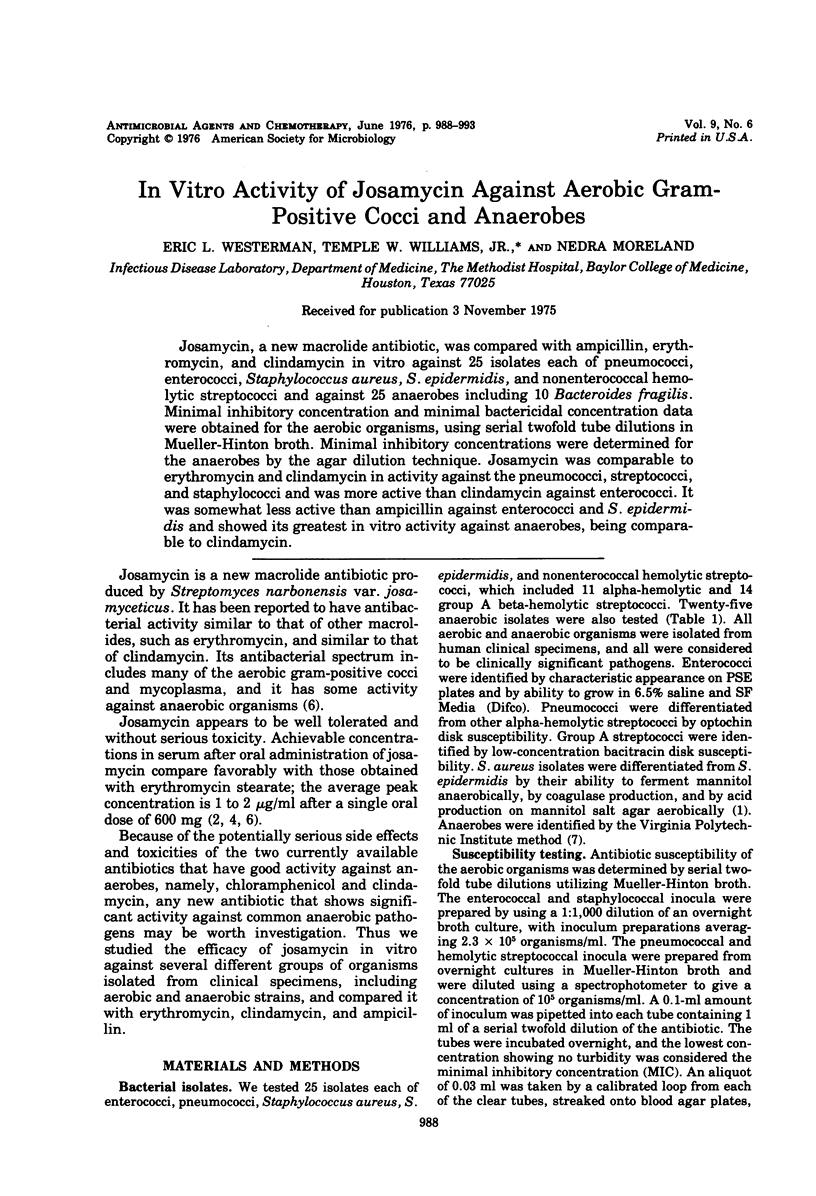

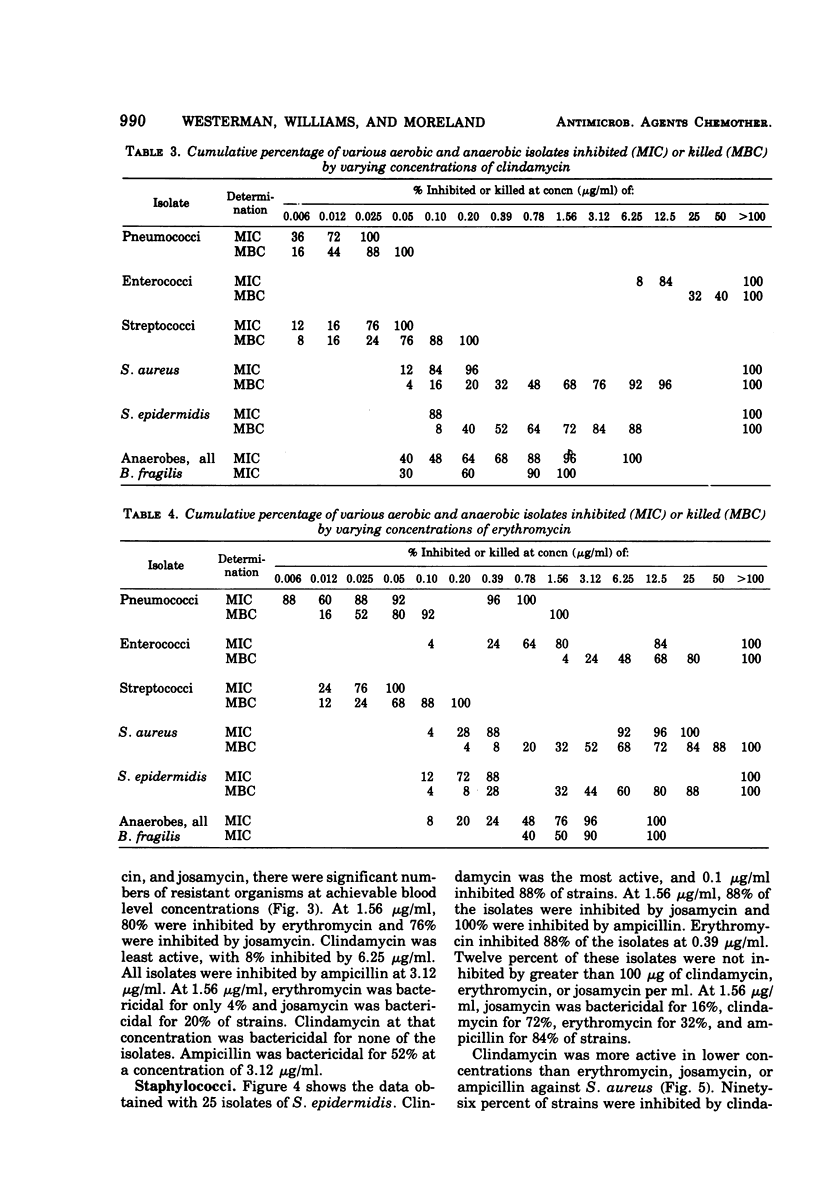
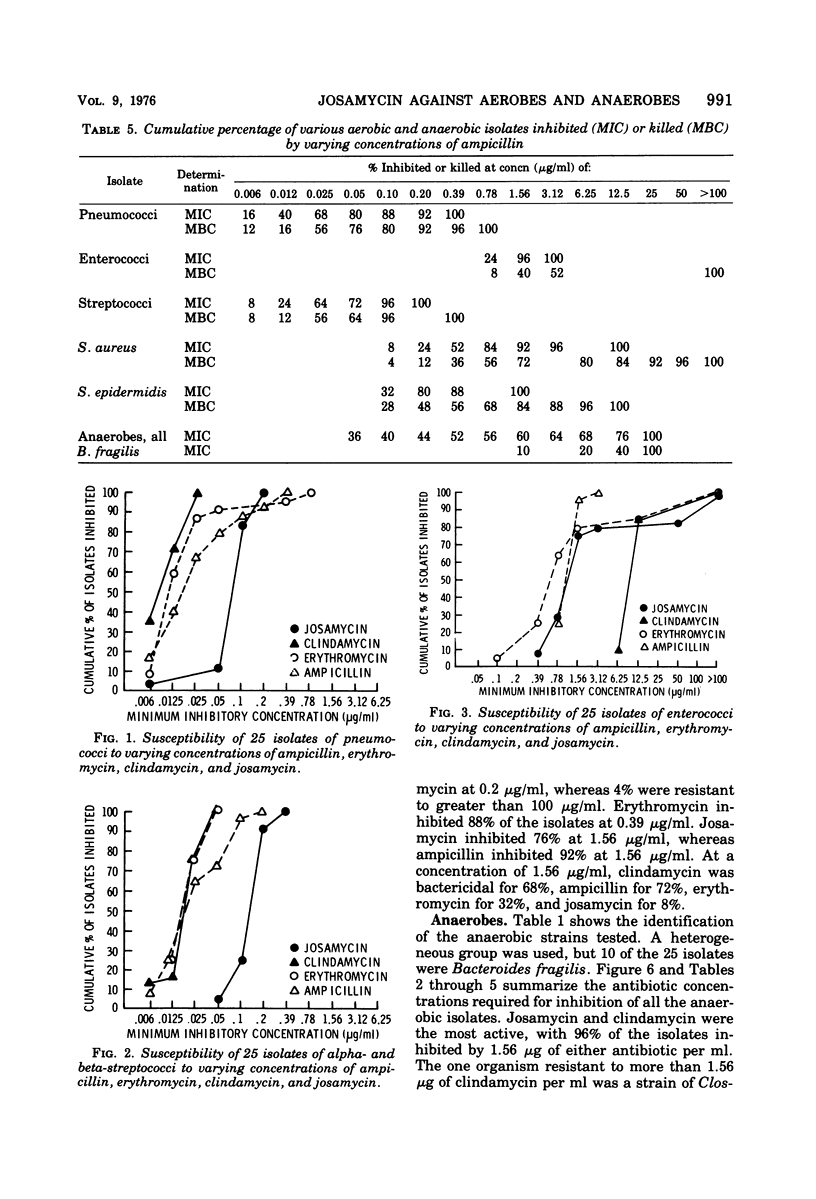
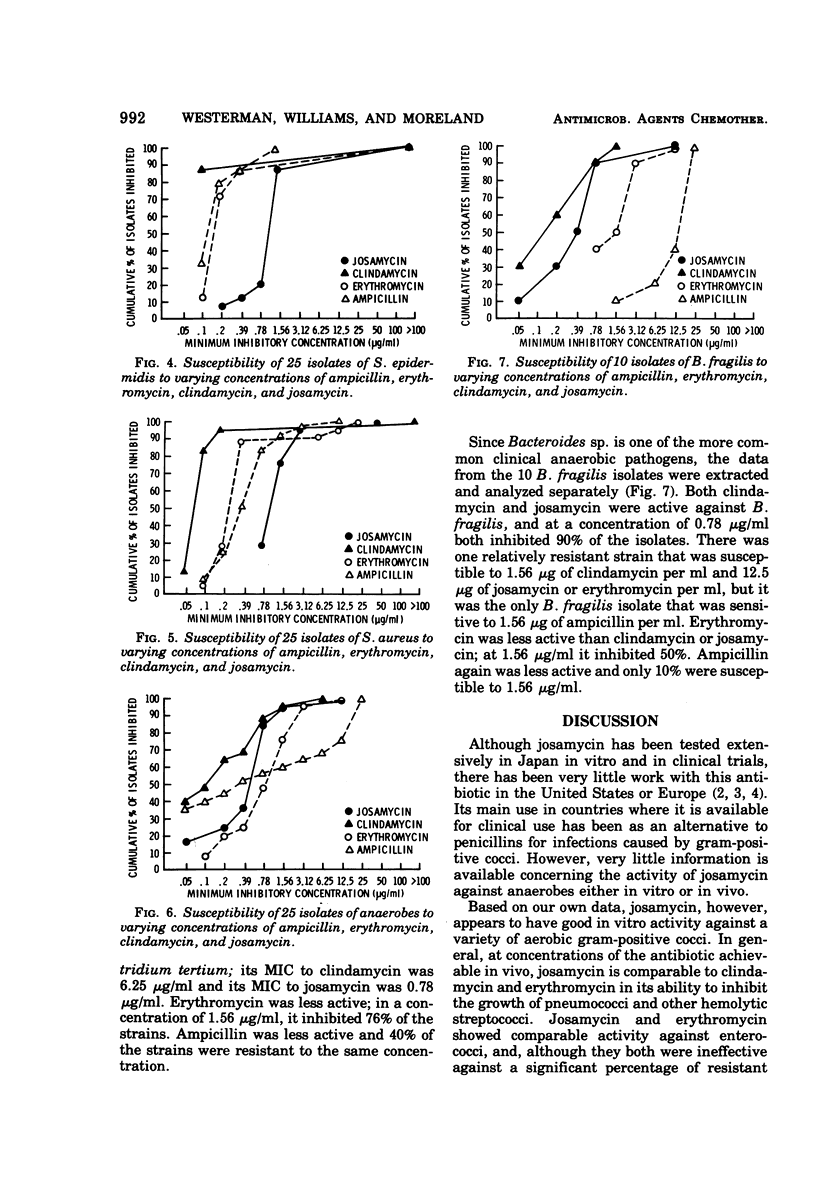
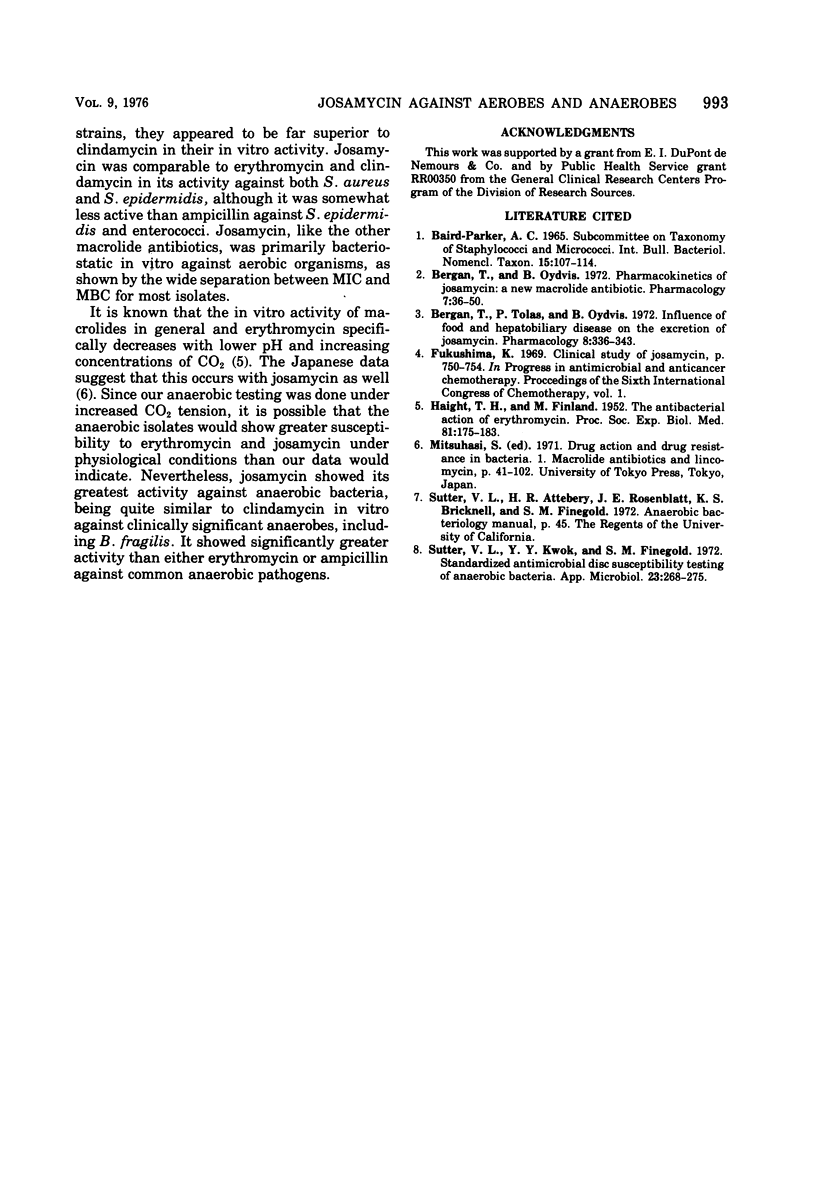
Selected References
These references are in PubMed. This may not be the complete list of references from this article.
- Bergan T., Tolås P., Oydvin B. Influence of food and hepatobiliary disease on the excretion of josamycin. Pharmacology. 1972;8(4):336–343. doi: 10.1159/000136351. [DOI] [PubMed] [Google Scholar]
- HAIGHT T. H., FINLAND M. The antibacterial action of erythromycin. Proc Soc Exp Biol Med. 1952 Oct;81(1):175–183. doi: 10.3181/00379727-81-19815. [DOI] [PubMed] [Google Scholar]
- Sutter V. L., Kwok Y. Y., Finegold S. M. Standardized antimicrobial disc susceptibility testing of anaerobic bacteria. I. Susceptibility of Bacteroides fragilis to tetracycline. Appl Microbiol. 1972 Feb;23(2):268–275. doi: 10.1128/am.23.2.268-275.1972. [DOI] [PMC free article] [PubMed] [Google Scholar]


